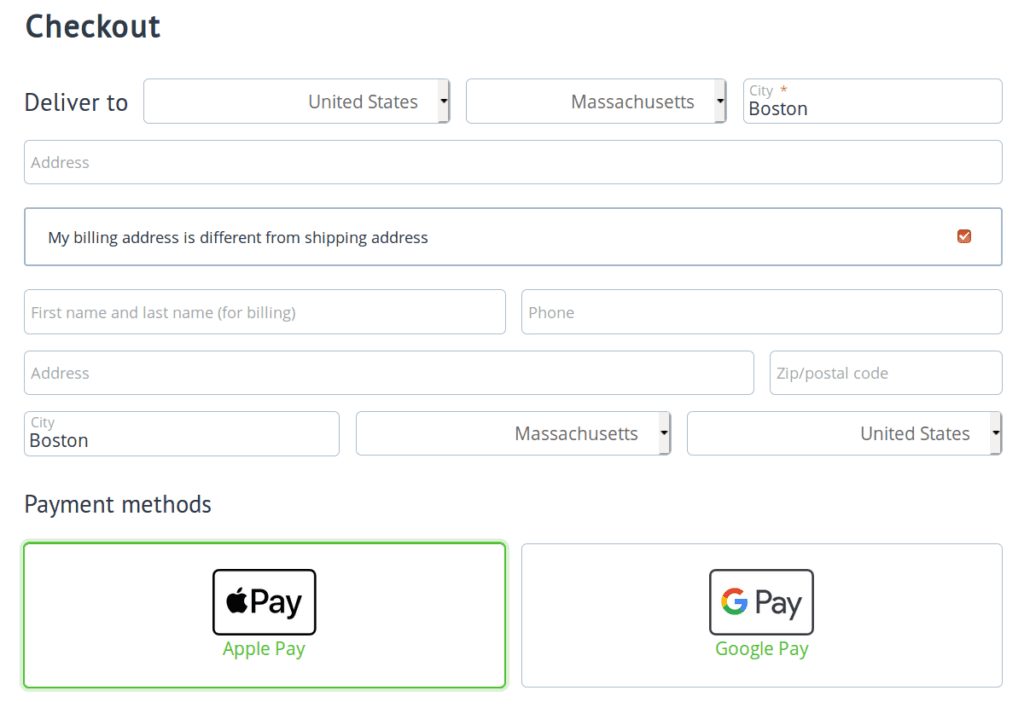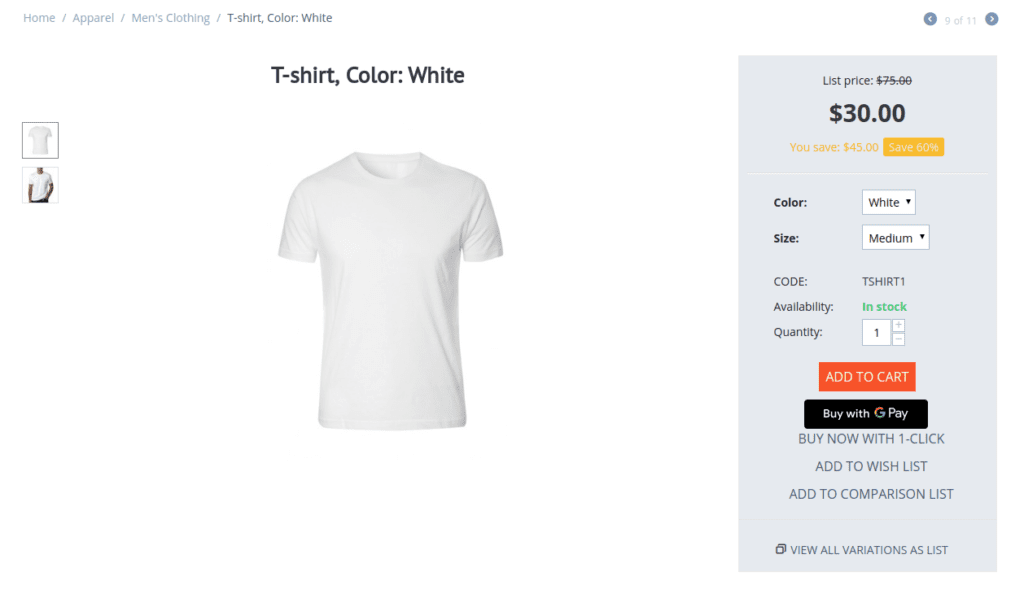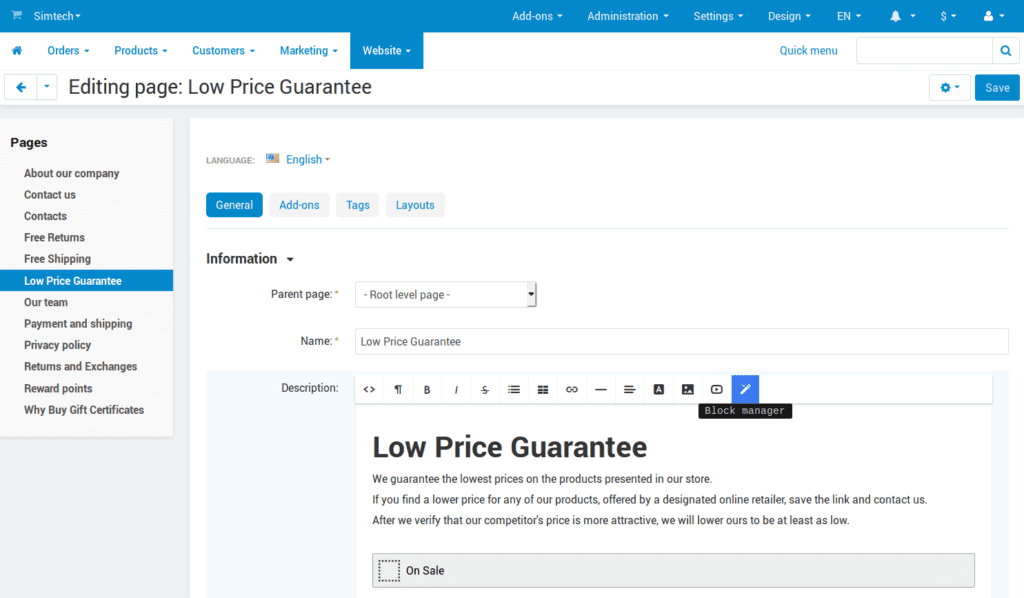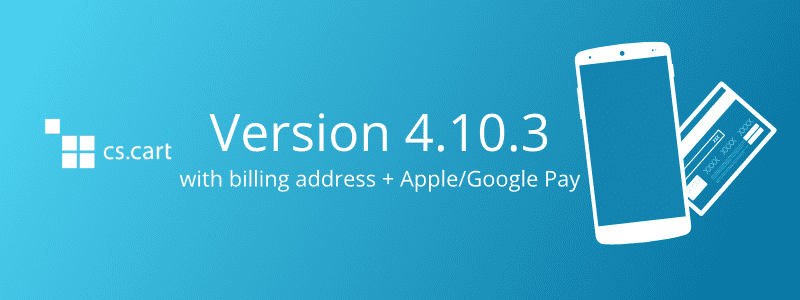Meet CS-Cart and Multi-Vendor 4.10.3 with Billing Address, Apple Pay, and Google Pay
We have released CS-Cart and Multi-Vendor 4.10.3. Although it is a patch version for fixing bugs, we’ve also introduced a couple of improvements which we’ll cover in the article. As usual, the full list of changes in version 4.10.3 is in the changelog.
Checkout: Billing Address and More Customization
1. New checkout now allows your customers to specify separate billing and shipping addresses, if they choose so. Just add the new block Checkout: Billing address to the checkout page. The billing address fields are hidden by default; they will appear when a customer ticks the corresponding checkbox.
2. The order of fields in the Checkout: Location block (Deliver to) is now changeable: you can offer customers to select their country and state first, and only then enter their city. The block now also supports other fields from the shipping address. Country, state, and city сan now be together with the rest of the address, if you choose so.
3. The First name and last name field can now become Last name and first name. It depends on the order of profile fields in the settings of the corresponding block at checkout. The names are also now split correctly. If a customer enters “John Richard Doe” (or “Doe John Richard” when the last name comes first), then Doe will be the last name.

Payments Methods: Stripe with Apple Pay and Google Pay
Stripe is a gateway that allows your store to accept payments from customers. Multi-Vendor has been offering Stripe Connect (a Stripe solution for marketplaces) since December 2017.
Now CS-Cart comes with Stripe support for single-seller online stores, thanks to the new Stripe Payments add-on. The best part is that Stripe allows you to set up Apple Pay and Google Pay payment methods in your store.
The process is fairly easy: install the Stripe Payments add-on that comes with 4.10.3, obtain Stripe API keys, and create a payment method with Stripe as the payment processor. Select whether you want this payment method to accept credit cards, Apple Pay, or Google Pay. If necessary, set up all three as separate payment methods.
You’ll also be able to let your customers make a purchase directly from a product page with the Apple Pay or Google Pay buttons. They’ll appear automatically in Safari/Chrome, if the customer has added a credit card to the browser and if you allow these buttons in the payment method settings.

Blocks: Adding Products to Blog Articles (And More)
If you use Redactor II WYSIWYG editor (check Settings → Appearance to find out and enable it, if necessary), you might notice the new Block manager button. It allows you to insert a block into the text. We originally created this functionality for adding blocks with products to the various pages and blog articles. But since blocks can contain all sorts of information, you might find other ways to use it.
Note that this functionality is still in development. Interface improvements and support of other editors may come in the future versions, depending on the feedback we get from you.

The upgrades to version 4.10.3 are already available. As usual, for the first few days after the release, we offer a limited number of upgrade downloads on a first-come-first-serve basis. If you don’t see anything in the Upgrade Center yet, try again a few hours later or the next day.
If you’re new, download the latest version and purchase the license.
Yan Anderson is the Head of Content Marketing at CS-Cart with over 10 years of experience in the eCommerce industry. He's passionate about explaining complicated things in simple terms. Yan has expertise in building, running and growing eCommerce marketplaces. He loves to educate people about best practices, new technologies, and trends in the global eCommerce industry.

